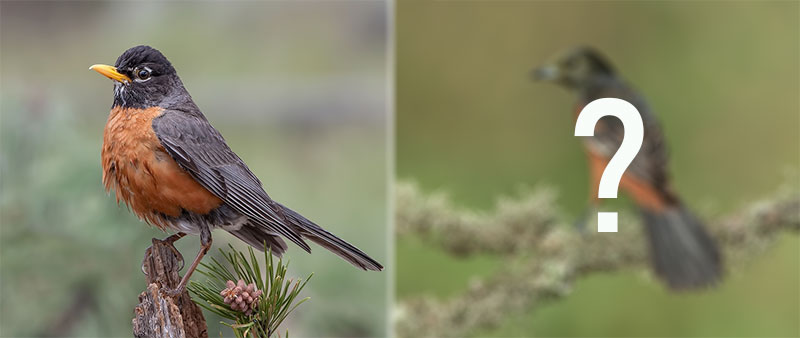
Robins are some of the most common and familiar birds. Like so many other people, whenever I hear them, I am reminded of spring and the promise of beautiful summer weather!
Officially known as the American Robin, their pleasant songs and handsome appearance are a standard part of most North American neighborhoods.
However, sometimes, we see birds that look like robins. They sort of look like robins, but we just know they are something different!
Do you see birds like that? I know I do! Keep reading to learn all about the birds that look like robins!
What does a Robin look like?
American Robins are pretty familiar birds. Even so, it’s still worth going over their most prominent field marks. This species is a fair-sized thrush around 10 inches long.
Males are dark gray above and brick-red below with white on their belly. They have blackish heads with bits of white on their throat and near their eyes. When I see them in flight, I also always notice the bits of white on the outer corners of their blackish tails.
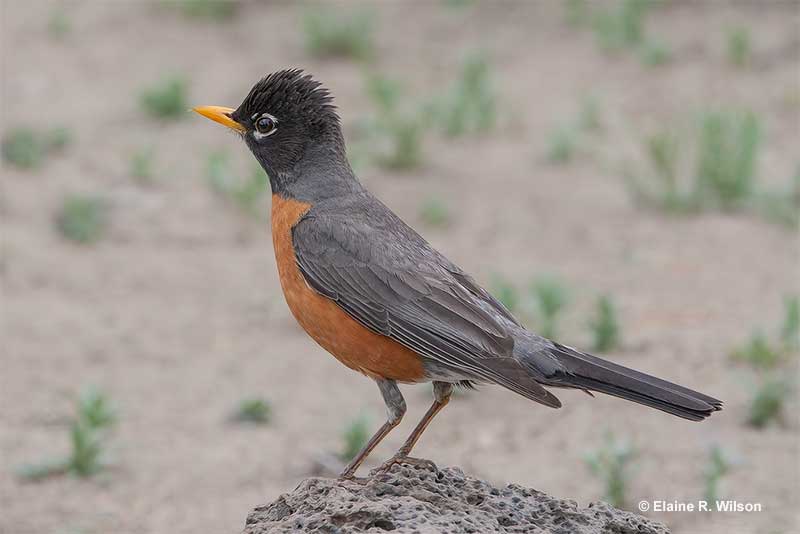
Female robins look like pale versions of males, and young birds are like females that have some spotting on their plumage.
We find American Robins in parks, suburban areas, and all sorts of habitats that combine trees with open lawns. Although these pretty birds are easy to recognize, some other species have some similar colors and attributes.
Robins are considered to be symbols of good luck and rebirth.
Spotted Towhee
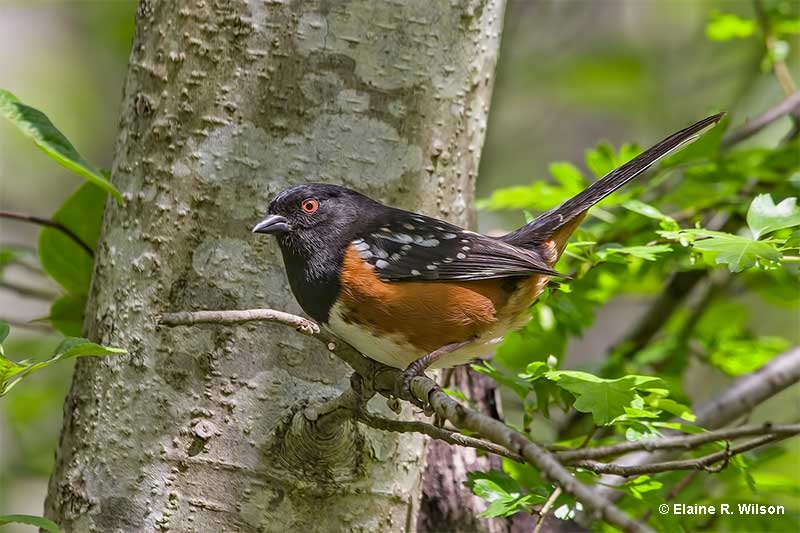
Spotted Towhees are medium-sized, slender, finch-like birds with conical black beaks and black heads. They mostly live west of the Rocky Mountains and have dark upperparts with some pale streaks and spotting, and white spots underneath their long black tails.
These pretty birds also have a white belly with handsome, brick-red flanks, and a buff undertail.
See more: Birds with orange chests
With their black head and brick-red sides, they remind me of an American Robin. However, they aren’t as big as a robin and have more of a black hood.
Spotted Towhees have a similar red-coloration on their underparts but only on their sides. In robins, we also see these red colors on their chest.
We can find both species foraging on the ground in similar places but when I see Spotted Towhees, they are hunched over and scratch the ground. American Robins stand tall before hopping or running to reach down and pull a worm from the ground.
Varied Thrush
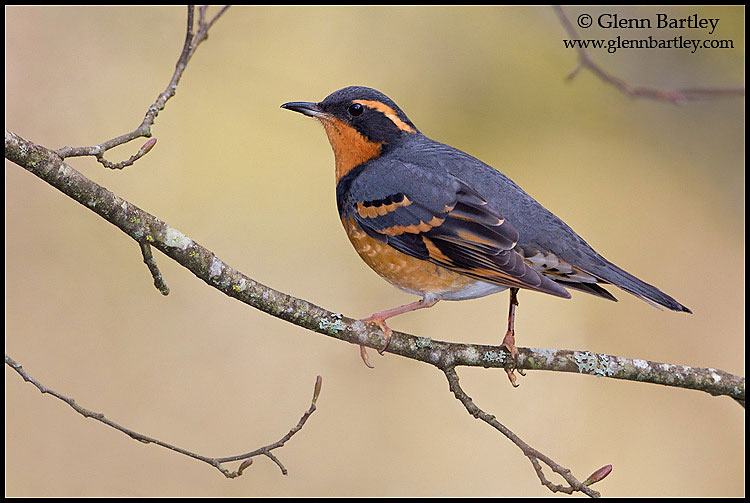
Varied Thrushes are medium-sized, orange and gray thrushes that live in Alaska and western Canada south to California. These thrushes are around the same size as an American Robin and also have a somewhat similar shape.
In general, Varied Thrushes are gray above and mostly orange below with orange and black markings on their wings. They have an orange eyebrow and dark mask, and males also have a black breast band.
We find Varied Thrushes in wooded habitats and, like American Robins, they can also forage on the ground and feast on berries in bushes and trees.
The Varied Thrush is also the species most commonly confused with the American Robin. With their gray upperparts and orange underparts, they can really remind us of a female American Robin.
However, robins never have orange and black markings on their wings, nor do they have an orange eyebrow or dark breast band.
American Redstart
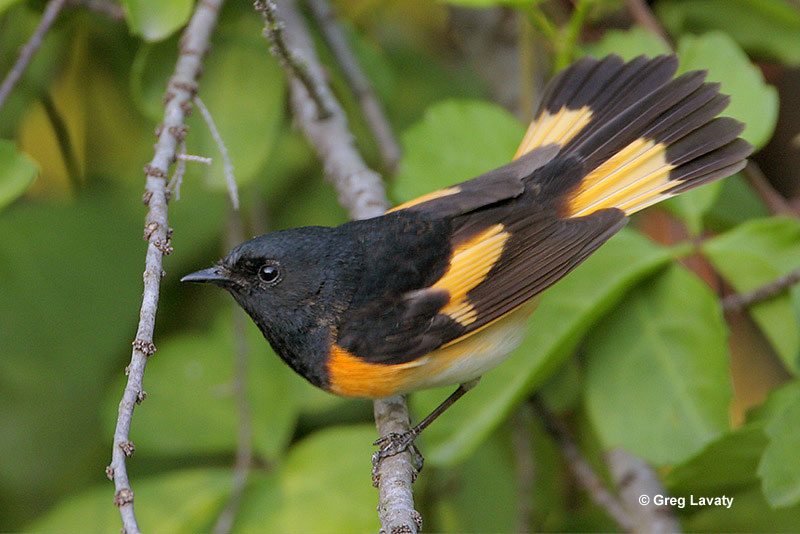
American Redstarts are beautiful little birds! Males are black with white on their belly, and orange markings on their sides, and in their wings and tail. Female and young American Redstarts are pale gray above, white below, and also have orange or yellow on their sides, and in their wings and tail.
They spend a lot of time actively foraging low in bushes and trees as they sally for insects. They often flash the colors in their tail and indeed, this is how I usually notice them.
While the male’s colors can remind some people of a robin, this is a very different bird. This warbler species is much smaller, a lot more active, and doesn’t stand or hop on the ground.
The male American Redstart also lacks red on its chest. It only shows those orange colors on its sides, and in its wings and tail.
Black-headed Grosbeak
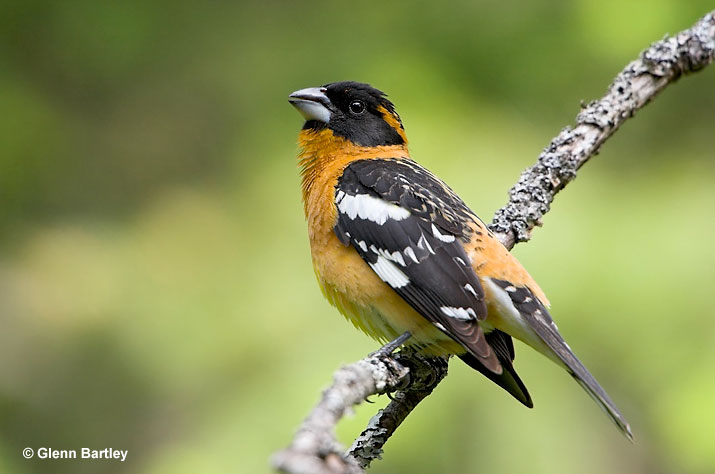
Black-headed Grosbeaks are chunky, finch-like birds with a big, conical beak. Males have an orange collar, rump, and underparts, have white and yellow on their belly, and a black head.
They also have dark streaks on their back, white spots on their black wings, and white spots under their dark tail. Females look like hefty, streaked, brown and buff sparrows.
With their black heads and orange underparts, male Black-headed Grosbeaks remind a lot of people of the American Robin. However, unlike the robin, they have a thick, finch-like beak, and white spotting in their wings.
Black-headed Grosbeaks mostly live west of the Rocky Mountains and we can see them in the same places as American Robins.
However, the grosbeaks rarely, if ever, come to the ground. We usually see them in bushes and trees, and occasionally at feeders. While a robin might forage for worms underneath a feeder, it won’t hope onto the feeder and eat birdseed.
Orchard Oriole
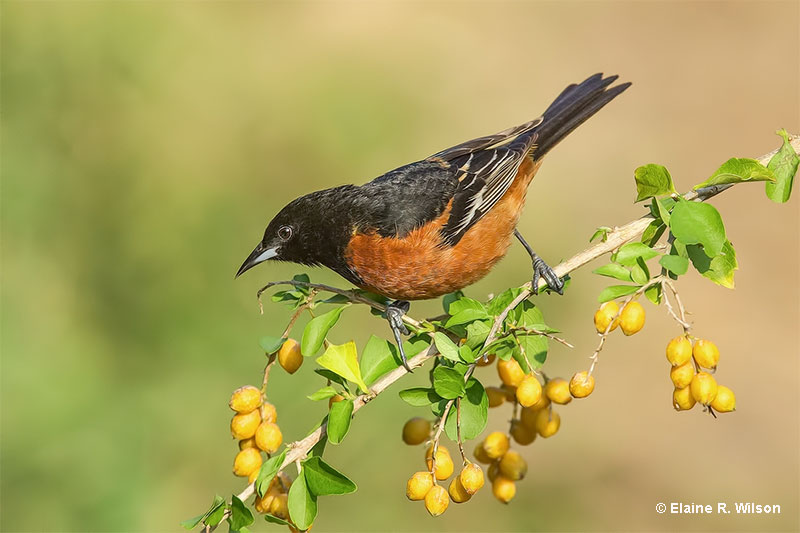
© Elaine R. Wilson
Orchard Orioles are slender, pretty little orioles that live in brushy habitats east of the Rocky Mountains. They occur in a few parts of southern Canada but are mostly summer birds of semi-open areas in the eastern USA.
Males can also remind us of American Robins. Like robins, male Orchard Orioles have black heads and dark reddish underparts. They also have some white edging on black and chestnut wings, a black back and tail, and a chestnut rump and undertail.
See more: Birds that look like orioles
Although their colors are similar to a robin, they differ in other ways. Orchard Orioles are so small, they sometimes remind me of a warbler! They also have a black, pointed beak while the American Robin has a yellowish beak.
I often see these two birds in the same area but I never see Orchard Orioles foraging for worms on the ground. While robins stand and hop on lawns, this oriole species probes flowers in bushes and trees.
Eastern Towhee
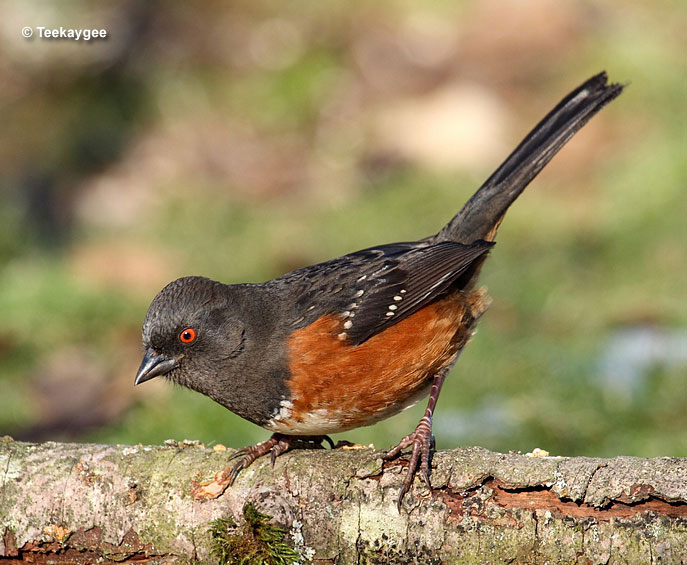
Eastern Towhees are slender, finch-like birds with conical black beaks and black heads. This handsome species is common in brushy habitats east of the Rocky Mountains. They occur in some parts of southern Canada but mostly live in the Eastern USA.
Males are dark above and have white bellies with brick-red sides, and a buff undertail. They also have a few white markings on their wings and white spots on their undertail. Female Eastern Towhees look similar but are brown instead of black.
Like the American Robin, male Eastern Towhees have a dark head and brick-red colors on their underparts. However, the towhee has a more extensive black hood and only has reddish colors on its sides.
We can see both of these species using parks and other similar habitats, but they don’t act the same. While I often see Eastern Towhees scratching leaf litter in brushy spots, American Robins hop and stand on open lawns.
Hermit Thrush
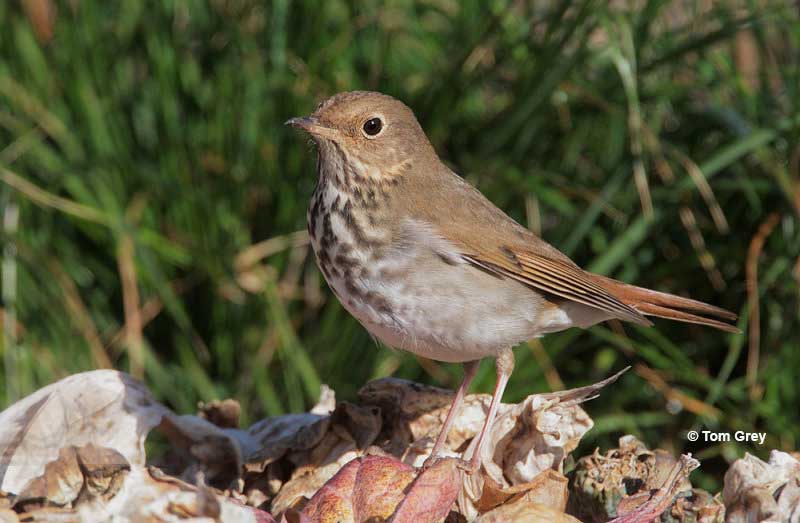
Hermit Thrushes are small thrushes with olive-brown upperparts and pale underparts with dark spotting on their breast. They also have a pale, broken eyering, and a red-brown tail.
This species is in the same family as American Robins, but is much smaller. Hermit Thrushes can sometimes remind us of young, spotted American Robins, but robins are always gray above and have some orange colors on their underparts.
Hermit Thrushes are brown, not gray, and robins do not have their contrasting, red-brown tail. Although they can live in the same places as American Robins, and can also forage like them, these birds act quite differently.
We often see American Robins out in the open, but Hermit Thrushes much prefer dense cover. When I see a Hermit Thrush, I’m often reminded of how American Robins are bold birds while Hermit Thrushes would rather stay out of the local birding limelight.
Have you ever seen any birds that look uncannily similar to robins? Let us know in the comments!

